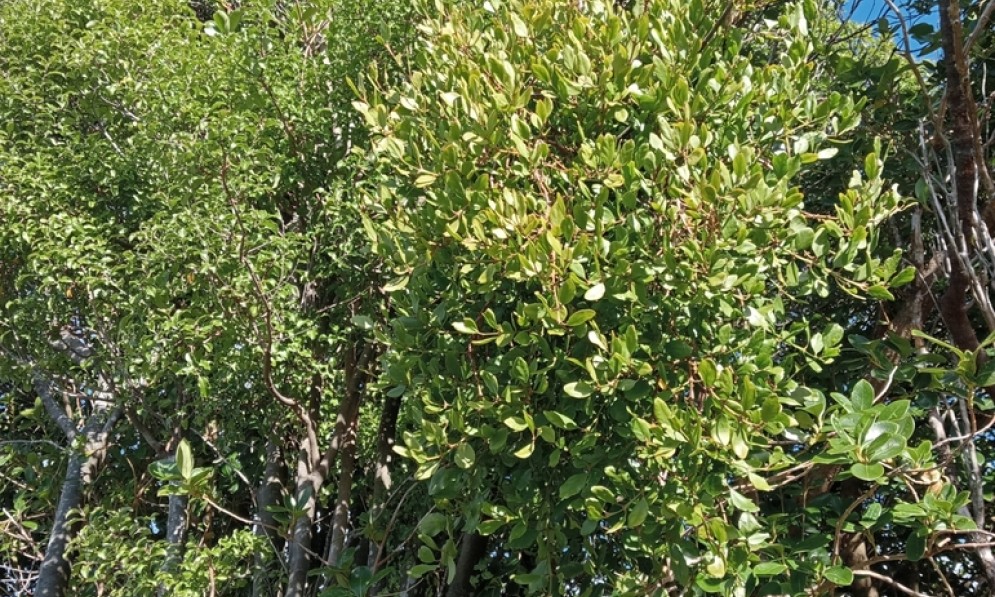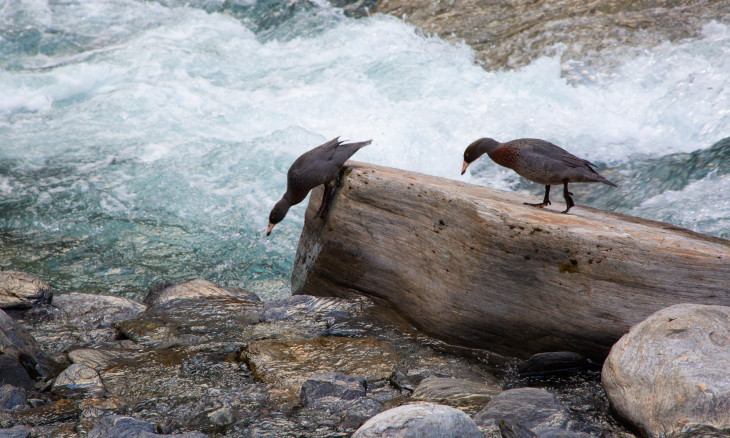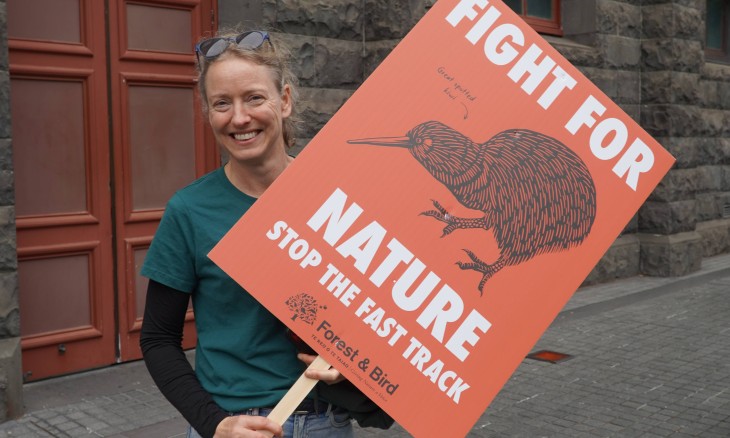In 2002, a group of volunteers from the Rotorua Branch of Forest & Bird, and the Rotorua Botanical Society started a project to remove animal and plant pests from a large part of the Lake Tikitapu Scenic Reserve and nearby lakeside marginal strip at Lake Ōkāreka (both areas on DOC administered land). The initial focus was on protection of threatened native mistletoe species Tupeia antarctica and Ileostylus micranthus. Rotorua Forest & Bird took on the pest control component and Rotorua Botanical Society undertook responsibility for weed plant removal.
In 2008 the Forest & Bird component of the group became the ‘Tikitapu Forest & Bird Care Group, carrying out pest control with an annual toxin programme. A network of Philproof and Romark bait stations has been established. Volunteers, both Forest & Bird members and members of the local community, carry out bait line maintenance, fill bait stations, monitor rats and marsupials and remove some weed trees. Kill traps for pest vertebrates, set up around the perimeter and in a line across the middle of the managed area, are checked and rebaited twice monthly.
The Rotorua Botanical Society carry out vegetation related work (e.g., weed control, planting and vegetation monitoring) assisted by members of Landcare Okareka.
In 2008, two tracks were developed by Tikitapu Forest & Bird volunteers to showcase an area where mistletoe plants are growing (Ōkāreka Mistletoe Walk) and to provide a nature walk with identification of plant species common to the area (Tikitapu Nature Walk). These popular walks are well-patronised by local and visitors.
In 2001 before the pest control started, DOC intensively surveyed the area at the Ōkāreka end of the project area and returned a count of 218 mistletoe plants, all of them Tupeia antarctica. In 2016 a survey of the same area returned 2,034 healthy plants, including a few Ileostylus micranthus. A mistletoe census undertaken in January 2024 returned a count of 8044 Tupeia and 56 Ileostylus, a marked increase from the 2001 census figures. Mistletoe plants can now be seen in many locations within the reserve.
Volunteer work days take place on the first Sunday and Monday of the month from May to July for bait line maintenance. The toxin programme (laying and retrieving bait) typically takes place over a number of weekends during August and September. We meet at 9.00am by the Lake Okareka fire station for a briefing and task allocation. Morning tea is provided and we are typically finished by midday (or early afternoon). If you would like to be part of the team please respond to the Rotorua branch email.
DOC re-measured the Mistletoe Foliar Browse Lines in 2013. There was clear evidence of an increase in density and distribution of mistletoe since the start of the pest control programme.
.
The 2024 result is conservative as the whole area was not covered.
2022 branch award
How to volunteer
What can you do
Link to mistletoe walk
- https://www.doc.govt.nz/parks-and-recreation/places-to-go/bay-of-plenty/places/lake-okareka-scenic-reserve/things-to-do/okareka-mistletoe-walk/
Link to mistletoe conservation pages?
- Item 1
- Item 2











